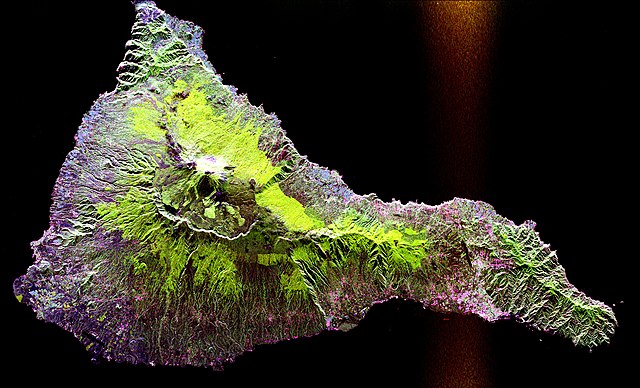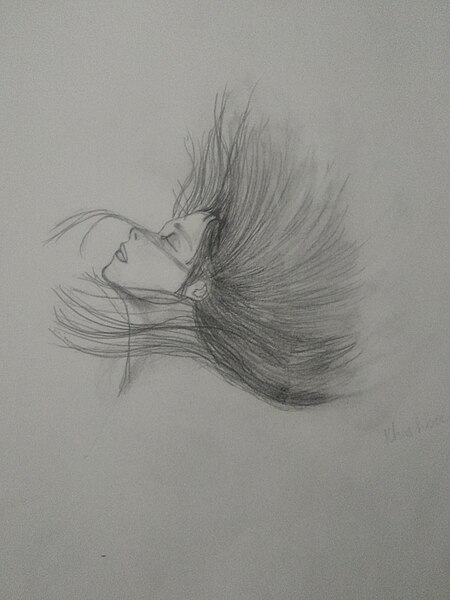Holography is a technique that enables a wavefront to be recorded and later reconstructed. It is best known as a method of generating three-dimensional images, and has a wide range of other uses, including data storage, microscopy, and interferometry. In principle, it is possible to make a hologram for any type of wave.
Two photographs of a single hologram taken from different viewpoints
Horizontal symmetric text, by Dieter Jung
This is a photograph of a small part of an unbleached transmission hologram viewed through a microscope. The hologram recorded an image of a toy van and car. It is no more possible to discern the subject of the hologram from this pattern than it is to identify what music has been recorded by looking at a CD surface. The holographic information is recorded by the speckle pattern.
Peace Within Reach, a Denisyuk DCG hologram by amateur Dave Battin
An image is a visual representation. An image can be two-dimensional, such as a drawing, painting, or photograph, or three-dimensional, such as a carving or sculpture. Images may be displayed through other media, including a projection on a surface, activation of electronic signals, or digital displays; they can also be reproduced through mechanical means, such as photography, printmaking, or photocopying. Images can also be animated through digital or physical processes.
A synthetic-aperture radar image acquired by the SIR-C/X-SAR radar on board the Space Shuttle Endeavour shows the Teide volcano. The city of Santa Cruz de Tenerife is visible as the purple and white area on the lower right edge of the island. Lava flows at the summit crater appear in shades of green and brown, while vegetation zones appear as areas of purple, green, and yellow on the volcano's flanks.
2D image






